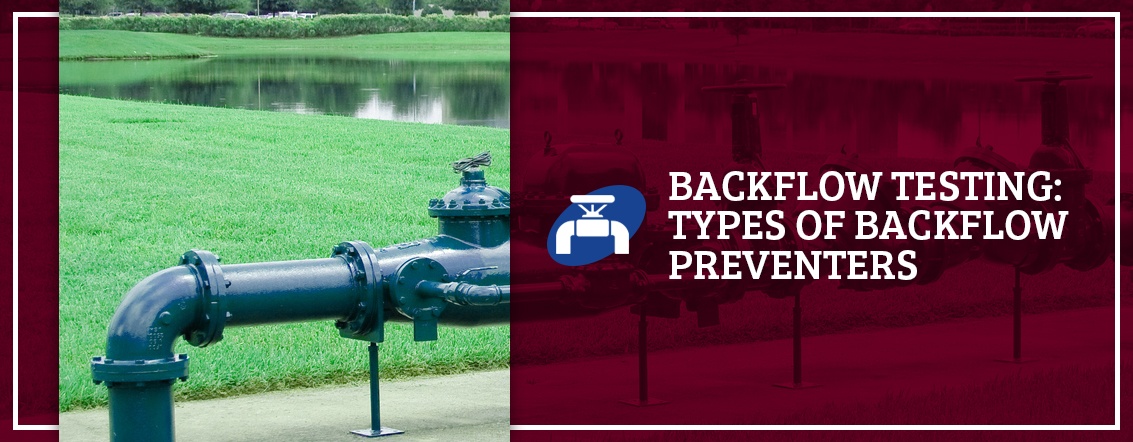Welcome to Ready & Able, formerly known as David LeRoy Plumbing! Although our name and brand have changed, we are still here to serve you and all of your plumbing, heating, cooling, and air quality needs!



Water that flows into your home should flow in only one direction. Clean water enters, and dirty water exits. And usually, that’s how it works. Sometimes, though, the flow of water changes direction so the dirty water flows back toward the clean. When that happens, you have backflow on your hands.
Think of the waste you flush down the toilet or the dirty water that flows out of your dishwasher or laundry machine. Imagine if that dirty water got into your home’s clean water supply — the water you drink and bathe in. Even though the United States has some of the safest public water in the world, the country sees up to 32 million cases of acute gastrointestinal illness every year, and backflow from contaminated water is one reason why. The Centers for Disease Control and Prevention (CDC) recorded 57 waterborne disease outbreaks between 1981 and 1998 that resulted from cross-connections that led to backflow. These outbreaks caused more than 9,700 illnesses.
Investing in backflow preventers to prevent that scenario from happening is an excellent idea. You should also invest in regular backflow testing to make sure your first lines of defense against contaminated water are working properly.
What are backflow preventers, and what can they do for your home? This article answers these questions, explains how to prevent backflow and discusses the importance of backflow testing to keep your household’s water safe.
Backflow occurs when water reverses course and begins to flow in the wrong direction. Serious contamination can result, leading to illnesses and even fatalities. For this reason, it’s important to test for backflow and address any problems immediately.
There are two main reasons backflow can occur: backsiphonage and backpressure.
So what is backflow testing? Backflow testing evaluates a plumbing system to see if backflow is occurring. Fortunately, the process is relatively fast and easy.
In backflow testing, a plumber assesses how well backflow preventers are working. Backflow preventers are devices within the plumbing system that keep the flow of water moving in the proper direction. They act as barriers to prevent harmful contaminants from entering a community’s potable water supply.
Backflow preventers are often located in the cross-connections that link clean water to the applications in which it is used. For example, backflow preventers are often present in equipment such as sprinkler irrigation systems to prevent chemical fertilizer or manure from backflowing into the water supply and contaminating the drinking water. They are mandatory on plumbing systems that may contain hazardous chemicals, industrial fluids, fertilizers or additional sources of water. But they are vital for home protection as well.
During backflow testing, a certified plumber will open and close the valves of the backflow prevention device or assembly to make sure it is functioning as it should. The plumber will assess the valves for leakage, gauge movement and other telltale indicators of a malfunction.
If the valves are working correctly, you’ll be all set — if not, the plumber can most likely do some quick repairs to keep your home’s water safe and clean.
Backflow testing is vital for mitigating the harmful effects of backflow. Some backflow testing benefits include the following:
Backflow preventers generally come in two different types: backflow prevention devices and backflow prevention assemblies.
Backflow prevention devices can stop the reversal of flow in a plumbing system. Once installed, however, they are impossible to test because they lack inlet valve shutoffs, outlet valve shutoffs and test valves.
An atmospheric vacuum breaker, also known as an atmospheric antisiphon, is one type of backflow prevention device. Two common examples are household hose bib vacuum breakers and frostproof wall hydrant faucets. An atmospheric vacuum breaker is generally a less reliable and effective backflow preventer than the backflow prevention assemblies we will discuss below.
An atmospheric vacuum breaker relies on air pressure to function rather than water pressure. It contains an air inlet valve that remains closed if water flows in the proper direction. If the flow of water reverses, the air inlet valve opens to prevent backsiphonage.
Cost may be a factor when consumers are considering an atmospheric vacuum breaker. Instead of being installed in one central location, atmospheric vacuum breakers are installed after every control valve on a pipe or on each zone of a sprinkler system. So for complex plumbing systems with many valves, atmospheric vacuum breaker assemblies are not typically economical solutions.
Several other limitations impede the efficacy of atmospheric vacuum breaker assemblies. For instance, these assemblies cannot protect against chemigation backflow — that is, the application of chemical pesticides or fertilizers via irrigation water. They also cannot be used in systems where they will be under constant pressure, such as in plumbing systems with downstream shutoff valves. For this same reason, though they protect against backsiphonage, they cannot protect against backpressure. Atmospheric vacuum breakers must also be installed at least 6 inches above any downstream piping.
Backflow prevention assemblies, on the other hand, contain all the requisite valves and shutoffs for testing, so they can and should undergo regular testing to ensure their effective function. Below are a few common types of backflow prevention assemblies:
The pressure vacuum breaker (PVB) assembly is one of the most common types of backflow preventers. Its design is straightforward and intuitive, and it is relatively economical to purchase and use, as well as easy to maintain and repair. A PVB assembly consists of a couple of different parts:
A PVB assembly also has an air inlet valve that opens when the internal system pressure is higher than the external pressure, thereby preventing backsiphonage.
These assemblies are typically installed vertically, at least a foot above the highest downstream point in the plumbing system.
One of the main disadvantages of PVB assemblies is that they are not typically suitable as a defense against backpressure — they protect against backsiphonage only. So consumers should not use these models where the likelihood of backpressure in the plumbing system is high. PVB assemblies also cannot protect against backflow of chemigation. They are, however, designed for use in both low- and high-hazard scenarios.
PVBs may sometimes leak water, but consumers can look for spillproof models for indoor plumbing installations to help prevent water leakage. Spill-resistant vacuum breakers (SVBs) solve the problem of leaky assemblies. They are similar in construction to PVBs, but they have additional diaphragm seals to keep water from spilling out of the air inlet when the assembly becomes pressurized.
Like regular PVBs, spill-resistant vacuum breakers protect against backsiphonage but not against backpressure.
A double check valve assembly (DCVA) is another common choice for backflow prevention in both indoor and outdoor plumbing systems. It is the most common type of backflow preventer for underground or in-line usage.
A double check valve typically contains an inlet shutoff valve and a valve body with two spring-loaded, independently operating check valves, four test valves and an outlet shutoff valve. A DCVA can be installed either horizontally or vertically — an in-line installation means that the valve will be installed parallel to the piping, whichever way the piping runs. Unlike with a PVB installation, a DCVA does not need to be installed at least a foot above the highest downstream point in the plumbing system. It does, however, require a foot of clearance underneath for maintenance purposes.
Unlike PVBs, DCVAs can protect against both backsiphonage and backpressure, but they typically cannot safeguard against chemigation backflow. They are designed for use only in low-hazard scenarios.
A reduced pressure principle (RP) backflow assembly, also known as a reduced pressure zone assembly, is one of the safest and most dependable backflow preventers on the market. It is also one of the most expensive and one of the most complex to install and maintain, so consumers will need to weigh these pros and cons carefully.
An RP assembly typically consists of an inlet shutoff valve, a pressure differential release valve that separates two independent spring-loaded check valves, four test valves and an outlet shutoff valve. It also contains a mechanically independent relief valve to maintain a low-pressure zone between the check valves.
These assemblies can be installed in a range of different configurations. Underground installation typically calls for straight, in-line installation, whereas above-ground installation allows for a more compact installation to conserve space. Ordinarily, the installation must be horizontal, though some assemblies can be specially configured for vertical installation. As with DCVAs, RP assemblies require a foot of clearance underneath for maintenance purposes.
Unlike other types of backflow preventers, RP assemblies can protect against chemigation backflow. They can also protect against backsiphonage and backpressure and are designed for use in both low-hazard and high-hazard scenarios.
Below are a few factors to keep in mind if you are choosing new backflow preventers for your home:
To help keep your home water quality clean and safe, contact Ready & Able for backflow prevention and repairs.
Ready & Able is family owned and operated, and our licensed, experienced technicians provide friendly, reliable, professional service every time. We can test your backflow preventers and give you the peace of mind of knowing everything is working as it should be. We can also repair any issues we discover with precise workmanship you can depend on to keep your family safe. We offer a two-year warranty on all our work, so you’re covered just in case any further issues come up.
Contact us today to learn more.
Welcome to Ready & Able, formerly known as David LeRoy Plumbing! Although our name and brand have changed, we are still here to serve you and all of your plumbing, heating, cooling, and air quality needs!